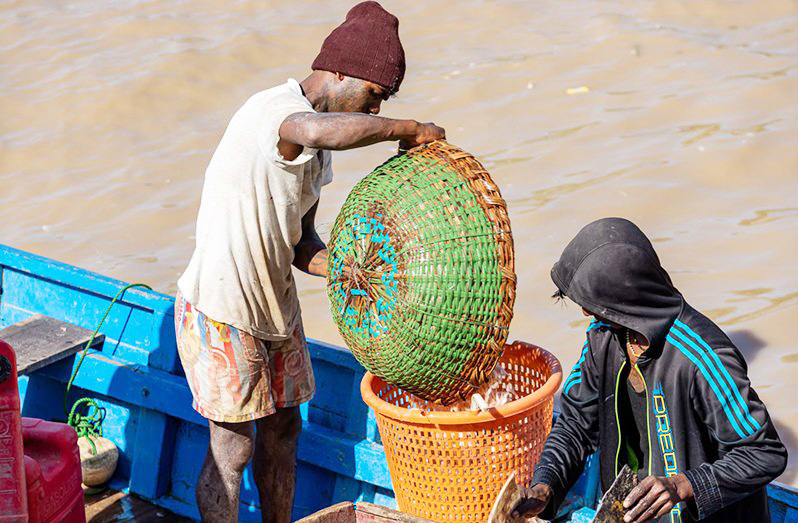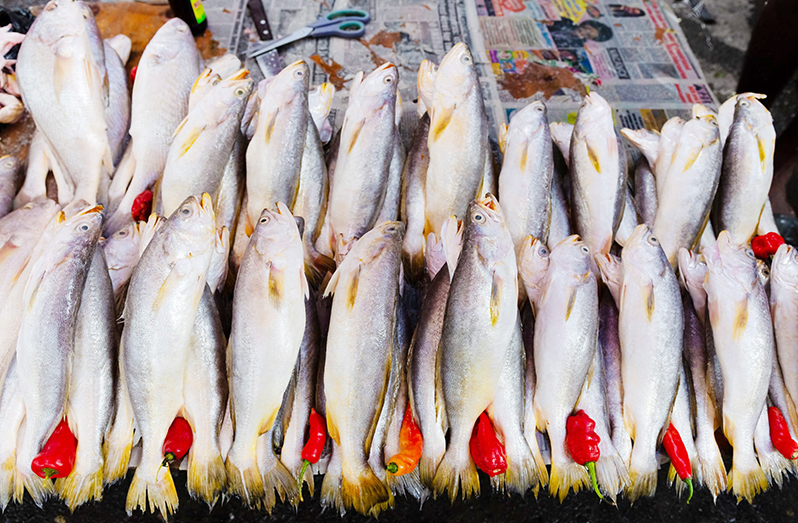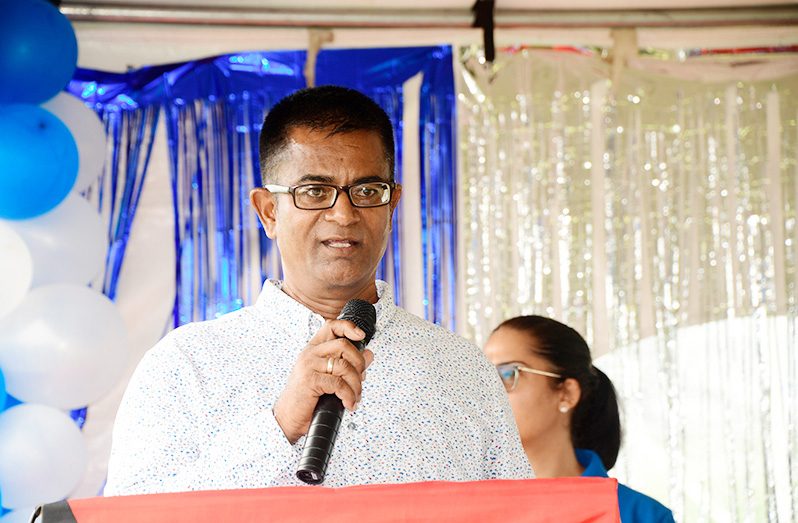–National Fisherfolk Ogranisation chairman urges Guyanese fisherfolk to employ healthier practices
–calls for more training, discussions among fisherfolk on ocean health
GUYANESE are said to consume approximately 35 kilograms (approximately 77 lbs) of seafood per person annually, a figure that the country’s Agriculture Ministry has confirmed to be twice the world’s average.
Those growing numbers have prompted local fishing organisations to employ healthier and sustainable practices.
At a recent event, Chairman of Guyana’s National Fisherfolk Organisation, Parmeshwar Jainarine, charged hundreds of fishers and vendors alike to be more aware of their environment.
“The world is still reeling from the impact of the pandemic, and if it’s one lesson to be learned from it is that it is essential and crucial to have in place effective guidelines and policies to improve the port environment and how we handle and care for food and food products,” Jainarine said.
He related that fishers have an important duty to ensure that wholesome seafood reaches consumers at the local and international markets.
“It starts from the sea. Fishers have to maintain high standards of hygiene, for example, they have to wash their hands with soap and clean water… they have to wear clean, protective clothing. They have to avoid coughing sneezing and smoking while handling fish and whilst icing fish,” Jainarine said.

Stressing the importance of preserving seafood, Jainarine acknowledged that many fisherfolks here do not use adequate cooling techniques to combat the effects of climate change.
“Adequate ice has to be used in your product; fish spoilage starts from when the fish dies and rising temperatures speed up the process… it’s very important to cool down the fish as quickly as possible and the best way to do that is by putting ice,” Jainarine said.
He believes that the process of improving aquatic food standards is not solely the responsibility of fishers alone. Vendors, processors, and management of the landing sites also have their part to play.
“It is unacceptable at this time to see persons still selling fish in dirty and unsanitary stalls in the market, and seeing people selling fish on the road without ice on it,” Jainarine said.
While acknowledging some shortcomings, he highlighted that some efforts are being made to improve the country’s aquatic seafood standards.
“The fisheries department with the Ministry of Health, along with other organisations have been conducting workshops at landing sites throughout the country; topics such as proper sanitary practices; use of ice; cleaning of boats are [addressed], but more needs to be done, all the landing sites are not covered.”
He added: “A better quality of seafood equals a healthier population, a better quality equals better price.”

OCEAN HEALTH
Stressing the importance of ocean and inland waters, and protecting sensitive species and habitats, Jainarine said that fishers must first change the way they interact with their environs.
“Improving ocean health is our business as fisherfolks too, we are all are living from the ocean and living from the sea, and we have to play our part in our own little way and how we can ensure that the oceans remain healthy.
“The ocean generates most of the oxygen that we breathe and the ocean controls the climate: how hot it is, how cool it is, all that comes from the ocean, so we have to stop using the ocean as our garbage ground,” he added.
NEW TECHNOLOGIES
To advance the country’s seafood industry, officials have been engaging several local and international experts from China and the Caribbean Community (CARICOM).
Most recently, cage culture was introduced and the ongoing pilot trails at Lake Mainstay and Lake Capoey on the Essequibo Coast of the country have been successful.
Agriculture Minister Zulfikar Mustapha had previously reported that the country received 50 fishing cages from the Chinese embassy.
Additionally, Guyana has partnered with organisations such as the United Nations Food and Agriculture Organisation (FAO) and the World Wildlife Fund (WWF) to provide technical guidance to support a sustainable fisheries sector.
Some of these projects include addressing the sustainability of resources through the FISH4ACP Project, the distribution of safety equipment, and the generation of a Fisheries Department Information System and the Caribbean Regional Fisheries Mechanism (CRFM) National Plan of Action for Illegal, Unreported, and unregulated (IUU) fishing.
The Government of Guyana has thus far expended $300 million to improve the social conditions at landing sites, construct washroom facilities, sheds, storerooms, ramps, install solar lights, and rehabilitate wharves.



.jpg)









